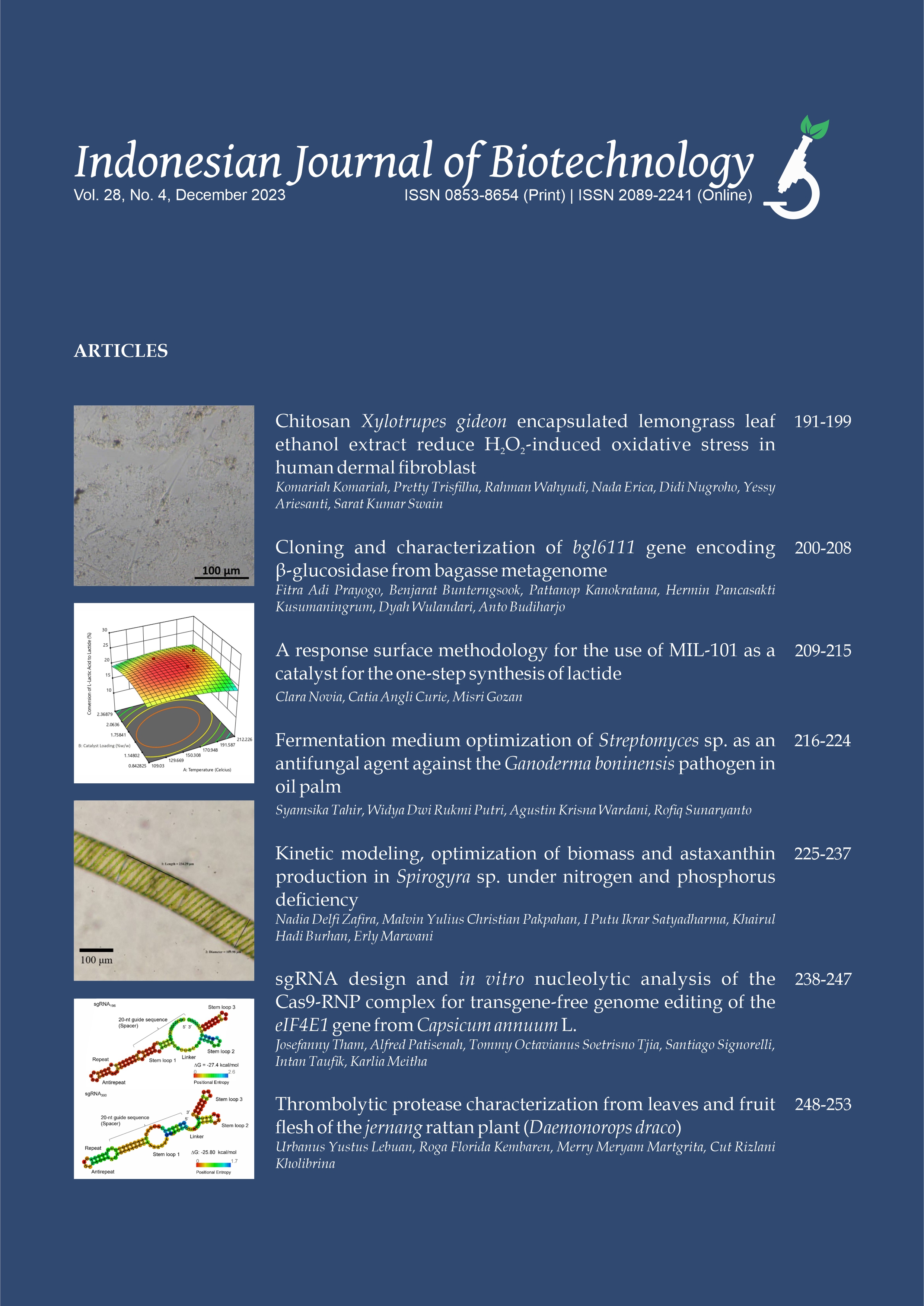Somatic embryogenesis of Sandalwood (Santalum album L.)
Toni Herawan(1*), Mohammad Na'iem(2), Sapto Indrioko(3), Ari Indrianto(4)
(1) PhD Programme Forestry Science Gadjah Mada University, Bulaksumur, Yogyakarta
(2) Faculty of Forestry, Gadjah Mada University, Bulaksumur, Yogyakarta
(3) Faculty of Forestry, Gadjah Mada University, Bulaksumur, Yogyakarta
(4) Faculty of Biology, Gadjah Mada University, Bulaksumur, Yogyakarta
(*) Corresponding Author
Abstract
Sandalwood (Santalum album L.) is native species of Indonesia, especially in East Nusa Tenggara, is one
of the twenty two species of the genus Santalum in the world. Sandalwood is an important tree because it has
high economic value can produce sandal oil these can be used for perfumes, cosmetics, pharmaceuticals, and
are often used in religious ceremonies. In vitro particularly somatic embryogenesis has been widely applied
in the propagation of sandalwood. The Objective of this research is to obtain regeneration of sandalwood
through somatic embryogenesis using leaves explant from various clones. Medium for embryo induction is MS
(Murashige and Skoog, 1962) solid medium containing treatment of 2,4-D (2,4-Dichlorophenoxyacetic acid)
at various concentrations. To the media 0,15 mg /l kinetin, 40 g/l sucrose, and 2,5 g/l gelrite were added.
Culture were incubated in the dark. Medium for Embryo development (maturation) is MS solid medium
containing treatment of BAP (Benzyl-amino-purine) at various concentrations. To the media 0,01 mg /l NAA
(Napthalene-acetic-acid), 40 g/l sucrose, and 2,5 g/l gelrite were added. Culture were incubated in the light. To
study the specifi c structure of sandalwood somatic embryo early detection was conducted using histological
analysis. Results of anova showed that the clones, media, and interaction between clones with media did not
signifi cantly affect the development of sandalwood callus percentage. Results of anova showed that the clones
and BAP concentration signifi cantly effect to the embryo development of sandalwood.
of the twenty two species of the genus Santalum in the world. Sandalwood is an important tree because it has
high economic value can produce sandal oil these can be used for perfumes, cosmetics, pharmaceuticals, and
are often used in religious ceremonies. In vitro particularly somatic embryogenesis has been widely applied
in the propagation of sandalwood. The Objective of this research is to obtain regeneration of sandalwood
through somatic embryogenesis using leaves explant from various clones. Medium for embryo induction is MS
(Murashige and Skoog, 1962) solid medium containing treatment of 2,4-D (2,4-Dichlorophenoxyacetic acid)
at various concentrations. To the media 0,15 mg /l kinetin, 40 g/l sucrose, and 2,5 g/l gelrite were added.
Culture were incubated in the dark. Medium for Embryo development (maturation) is MS solid medium
containing treatment of BAP (Benzyl-amino-purine) at various concentrations. To the media 0,01 mg /l NAA
(Napthalene-acetic-acid), 40 g/l sucrose, and 2,5 g/l gelrite were added. Culture were incubated in the light. To
study the specifi c structure of sandalwood somatic embryo early detection was conducted using histological
analysis. Results of anova showed that the clones, media, and interaction between clones with media did not
signifi cantly affect the development of sandalwood callus percentage. Results of anova showed that the clones
and BAP concentration signifi cantly effect to the embryo development of sandalwood.
Keywords
Somatic embryogenesis, Santalum album, Embryogenic callus, maturation
Full Text:
PDFArticle Metrics
Refbacks
- There are currently no refbacks.
Copyright (c) 2016 Toni Herawan, Mohammad Na'iem, Sapto Indrioko, Ari Indrianto

This work is licensed under a Creative Commons Attribution-ShareAlike 4.0 International License.









